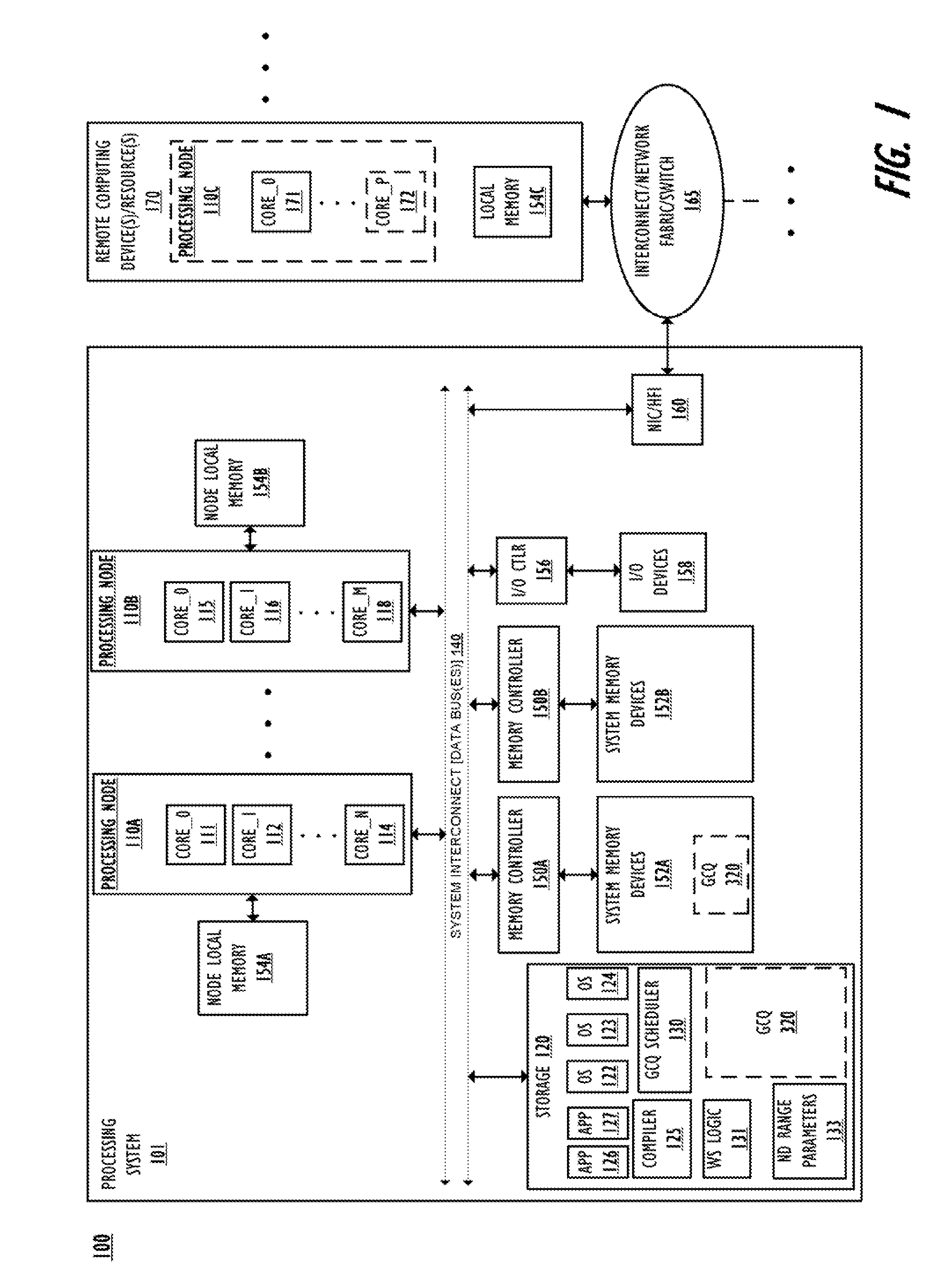Method to reduce queue synchronization of multiple work items in a system with high memory latency between processing nodes
a data processing system and queue synchronization technology, applied in the field of multi-processor data processing systems, can solve the problems of large complexity in the scheduler, inefficient run scenarios, and the implementation of work stealing algorithms, and achieve the effect of high access latency
- Summary
- Abstract
- Description
- Claims
- Application Information
AI Technical Summary
Benefits of technology
Problems solved by technology
Method used
Image
Examples
Embodiment Construction
[0023]The illustrative embodiments provide a method and a multi-node, multi-core processing system for efficient dispatch / completion of a work element within a multi-node data processing system having at least one processor nodes that exhibits high access latency to a global command queue (GCQ). The method implementation comprises: work scheduling logic at the high latency processor node establishing a local command / work queue (LCQ) in which multiple work items for execution by local processing units can be staged prior to execution; a first local processing unit retrieving via a work request a larger chunk size of work than can be completed in a normal work completion / execution cycle by the local processing unit; storing the larger chunk size of work retrieved in a local command / work queue (LCQ); enabling the first local processing unit to locally schedule and complete portions of the work stored within the LCQ; and transmitting a next work request to the GCQ only when all the work...
PUM
 Login to View More
Login to View More Abstract
Description
Claims
Application Information
 Login to View More
Login to View More - R&D
- Intellectual Property
- Life Sciences
- Materials
- Tech Scout
- Unparalleled Data Quality
- Higher Quality Content
- 60% Fewer Hallucinations
Browse by: Latest US Patents, China's latest patents, Technical Efficacy Thesaurus, Application Domain, Technology Topic, Popular Technical Reports.
© 2025 PatSnap. All rights reserved.Legal|Privacy policy|Modern Slavery Act Transparency Statement|Sitemap|About US| Contact US: help@patsnap.com



